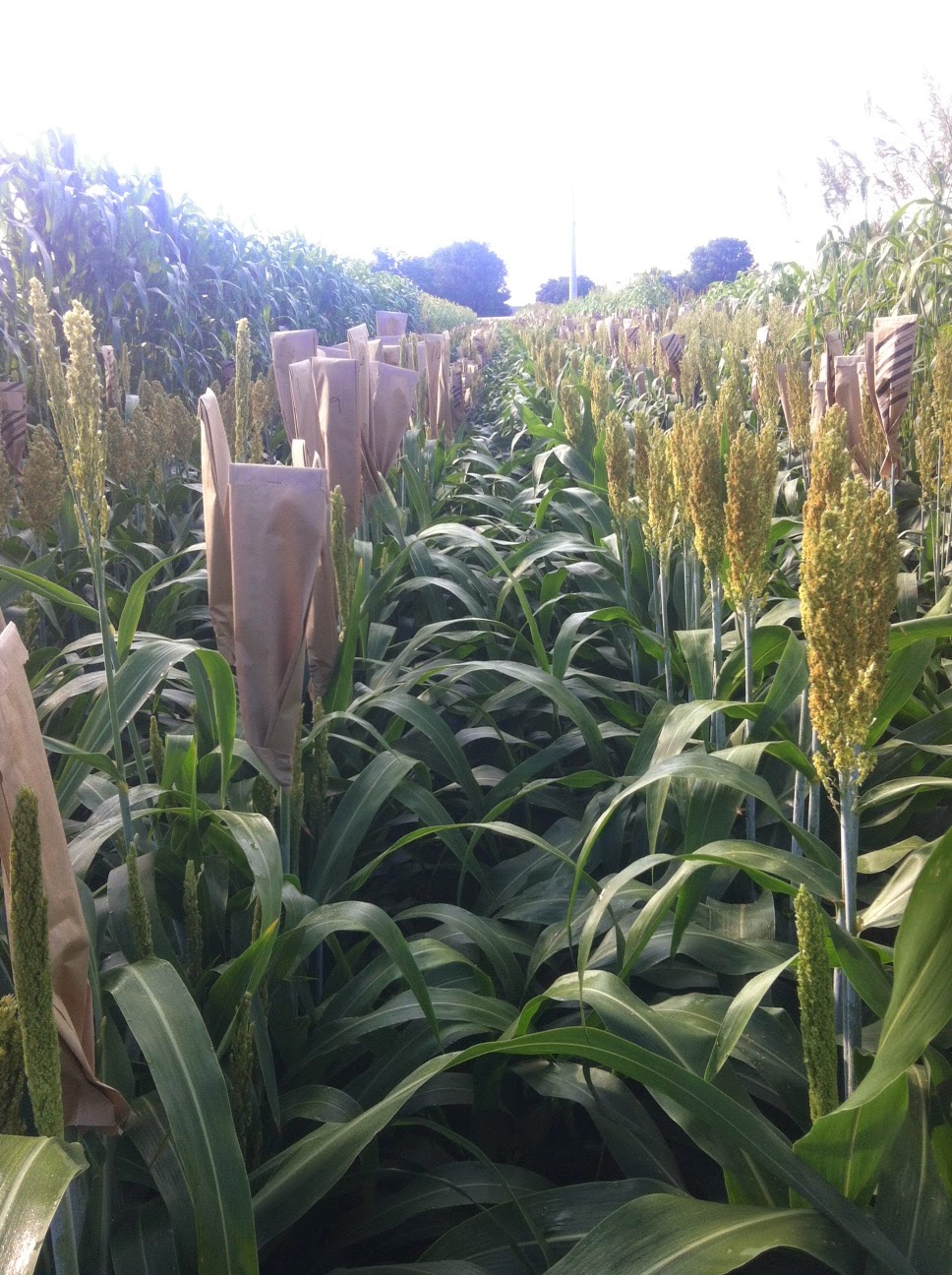Every day for two weeks now, we’ve been harvesting with two
of our graduate students. Each day we process anywhere from 300 to 1000 plants
(check out my post called The Harvest Begins for details) and ultimately, after
the tests are done and the data is recorded, the plants –or parts of the plants
–are put into paper bags, marked with the test and plot number, and then stored
in a dryer. They stay there for around five days and then the fun begins… The
fate of all the dried samples is to be crushed into a powder then analyzed. This
involves a two-step process: grinding and scanning.
 |
| Wiley mill |
To grind the samples down into the powder that will be
scanned, we use a Wiley mill. Basically, rough pieces of the dried plants are
put into a hopper on the top of the mill which leads to a chamber where
rotating blades collide with stationary blades. The sample is pulverized
between the blades and the ground up plant can then fall through a screen plate
at the bottom of chamber and is collected in a receptacle below. After the
sample is ground, it is stored in a plastic container to await scanning.
Grinding is one of the necessary evils of my job and
probably the task that I enjoy the least. It’s loud and it’s hot. Also it’s
just the nature of the beast that while the mill is grinding, the powder gets
kicked up into the air. To prevent breathing it all in, we do wear respirators.
However, because the room isn’t air-conditioned, you’re covered from head to
foot in sweat –which of course the powder adheres to. It can definitely get
unpleasant, especially since the powder-sweat combo is irritating to the skin.
Like I said, very unpleasant.
The next step in the process is scanning. We use a
near-infrared scanner to analyze the ground up samples. Basically, the NIR
scanner emits near-infrared light which hits the sample and is both transmitted
and reflected. The machine is able to detect how the light acts and can then
report the composition of the sample. This is done for each of the samples that
we take. For more detail on how this works exactly, you can check out this pdf
done by the genetics group here at A&M: http://maizeandgenetics.tamu.edu/SethCMurray/Teaching/Lectures/NIRS%20class%20V3.pdf
 |
| The NIR room |
Scanning, unlike grinding, is for the most part an easy and
pleasant job albeit a repetitive one. The sample is loaded into a round disk
that is glass on the bottom. It’s then placed in the scanner for it to do its
magic. And that’s pretty much it, other than making sure to clean the disks
properly and not leave smudges on the glass surface.
Well, my internship is almost over, August 1 is the official
last day. Check back to see my final post.
References















